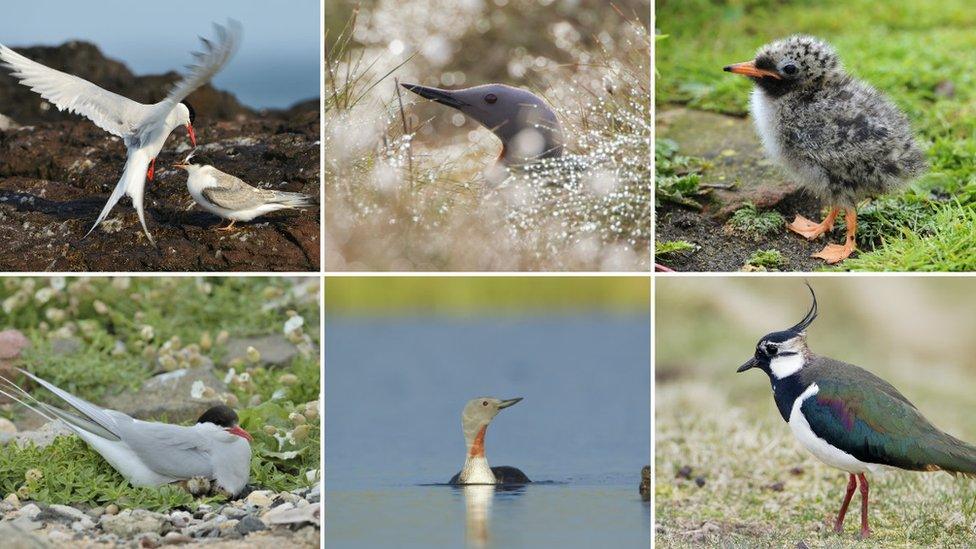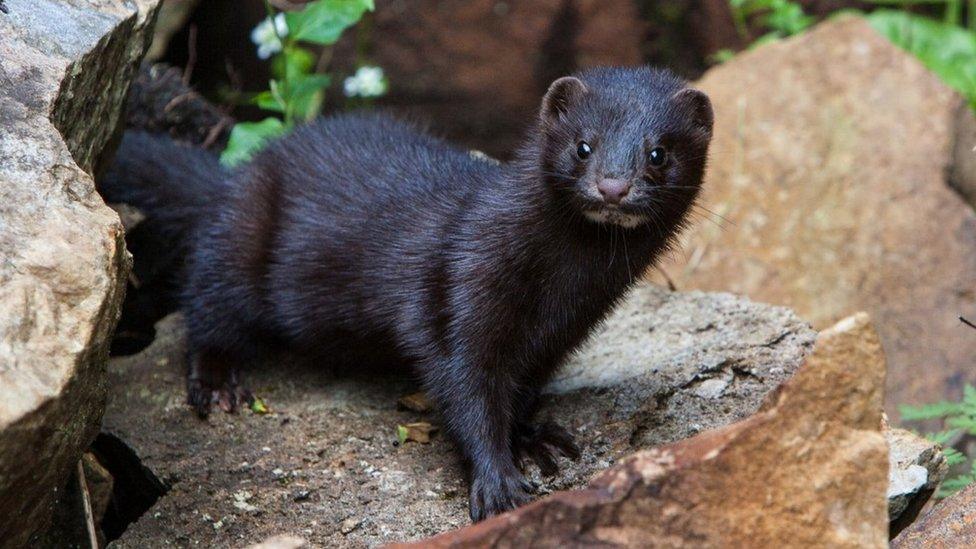Seabirds return to Outer Hebrides after mink 'eradication'
- Published

A number of seabirds have returned to the area, including ducks, terns, lapwings and red-throated divers
Native wildlife is "flocking back" to the Outer Hebrides following a 17-year project to eradicate the American mink.
The mink is believed to have been introduced to Scotland as part of the fur farming industry in the 1950s.
Feral populations grew across the Hebrides when farmers went out of business in the 1960s.
A total of 2,198 mink have now been caught, with only two non-breeding females and associated males caught in Lewis and Harris in the past 18 months
By 1999 breeding populations of mink had become established on North Uist and Benbecula.
The coastline and freshwater lochs helped the population grow to levels rarely reached in the mink's native North America.

The American mink is believed to have been introduced to Scotland as part of the fur farming industry in the 1950s
The Scottish Natural Heritage (SNH) project, which covered an area of more than 3,000 square kilometres, has helped to restore the number of seabirds including ducks, terns, lapwings and red-throated divers.
SNH chairman Mike Cantlay said: "We are delighted that all the hard work has been successful for the nature of the Hebrides.
"Mink - an invasive non-native species - prey on ground nesting birds and fish.
"With major funding from the EU Life programme, at the project's height a team of just 12 core Scottish Natural Heritage staff worked as teams of trappers to remove mink, and help bring back native birds to one of the remotest, wildest landscapes anywhere in Scotland."
'Significant achievement'
SNH area manager David Maclennan said: "Invasive species are one of the greatest threats to the beauty and variety of our nature. But the Hebridean Mink Project shows that we can take on invasive species - and win.
"It is fantastic to start welcoming back our native species. A range of factors are likely to be at play, but local people are telling us that a mink-free Outer Hebrides is having a hugely positive effect on wildlife and the economy."
Environment Secretary Roseanna Cunningham said: "The successful removal of non-native mink from the Hebrides is a significant achievement, and is the result of the sustained commitment and effort of all the staff involved.
"I am delighted that we are already seeing positive results, bringing the return of the seabirds and wading birds which the islands are world-famous for.
"This will provide a real boost for nature tourism in the Hebrides."
Murray Macleod, an operator with tourist boat provider SeaTrek, said: "Boat operators are already starting to see the results of the mink project.
"We have changed our tourist routes this year, because in places where there used to be no bird populations to view; now we are seeing colonies of terns with chicks.
"It's been an incredible boost to local tourism - and of course you can't top the delight on visitors' faces when they see our native birds thriving."